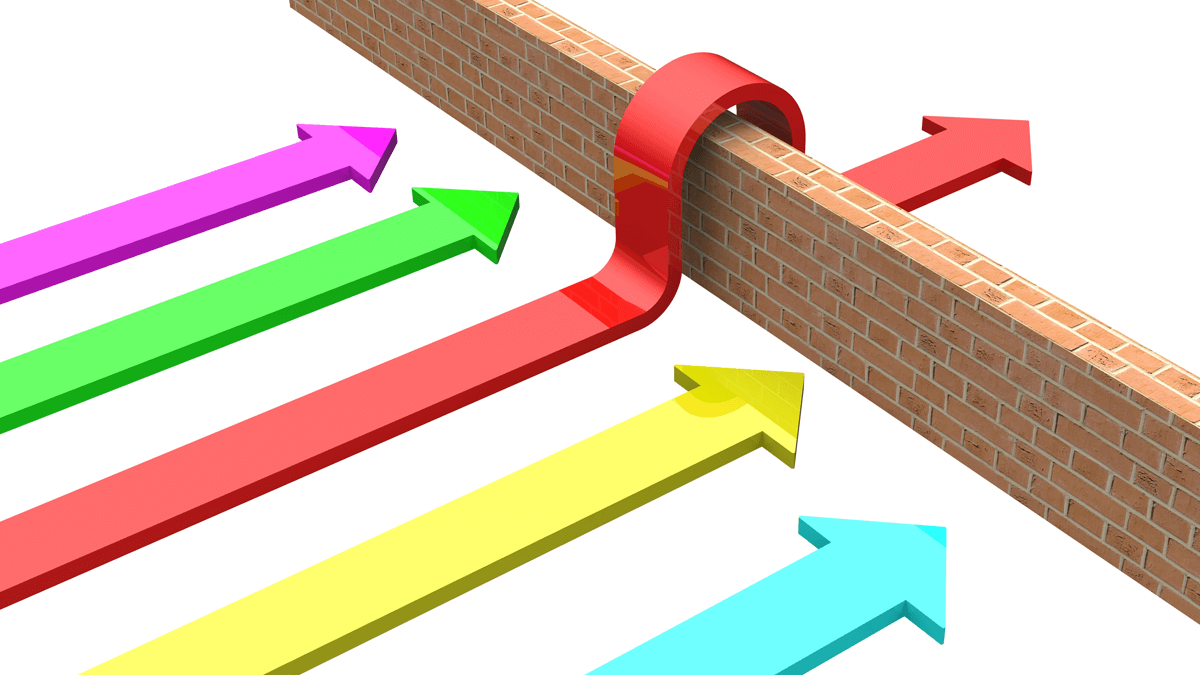While VOC is extremely important, the most overlooked practice in B2B product development today is competitive benchmarking. This should be done in the front-end of innovation using 4 steps: 1) Identify outcomes to benchmark, 2) Identify customers’ alternatives, 3) Identify test methods, and 4) Identify benchmark levels (how good is good enough?) ... Read More
Blog Category: Competition
My first rule of battles: You can’t win one you don’t know you are in.
In the 1970’s, Detroit automakers didn’t realize they were in a battle for quality. but Toyota did. In later years, the battle moved from quality to productivity improvements. But those were both last century’s battles. Today the battle is over innovation… to deliver more value to customers than your competitors.
Does your business leadership team know it’s in a battle for innovation? One way to find out is to wait until a competitor upends your market with a blockbuster new product. A better approach is to start building innovation capabilities earlier and strong than those competitors. More in white paper, Catch the Innovation Wave
Also see 2-minute video, Catch the innovation wave
Maximize your R&D ROI
Most B2B companies waste millions of dollars in failed product development. This often isn’t because their scientists can’t come up with good answers… but rather they’re working on the wrong questions. Good customer insight lets you move into the Non-Obvious zone, working on customer problems your competitors miss. ... Read More
Benchmark competing alternatives
The price premium your product gets is driven by its value over customers’ next-best alternative. Here’s the only reliable way to quantitatively assess competing products’ value.
b2bgrowth.video/36 Video length [2:41]
Some leaders could boost innovation by staying home
We see three areas where leaders can have a greater negative impact on innovation than positive: 1) organizational friction (travel bans, spending freezes, hiring delays, excessive re-orgs, etc.) that slow innovation to a crawl, 2) spreading too few resources over too many projects so that nothing moves briskly, and 3) short-changing the front-end of innovation, so that a clear picture of customer needs is lacking. Companies pay a heavy price for keeping such leaders in place.
More in article, Accelerate New Product Innovation
Today, barriers to competition look more like invitations to disruption
Consider disruptors such as Amazon, Uber, Apple and Airbnb. If you make physical products, someone may “Amazon” you by surrounding their product with amazing services based on the internet-of-things and artificial intelligence. That’s just one example. Stop relying on Porter’s Five Forces (e.g. barriers to competition) to protect you, and begin thinking how you can be the disrupter, not the disruptee. Check out these free FutureScenes® trends sheets for idea-starters.
More in FutureScenes sheets at www.futurescenes.com
Inertia is not your friend
Are you Newton’s object continuing in the same direction and speed… or are you the force acting on the object? Your company may think it can keep doing what it’s always done. But if your competitors learn how to understand unmet customers’ needs first, they will be the force that changes your direction (down) and speed (slower)… in their favor. Inertia is not your friend. Learning and change are.
More in e-book, Leader’s Guide to B2B Organic Growth
Most suppliers expect to grow faster than their served markets. This is usually fanciful thinking.
On average, you and your competitors will grow at the same rate as the markets you serve. Don’t feel entitled to this. If a competitor develops a blockbuster, you’ll be happy to minimize your sales decline. Thinking otherwise is like 1970’s Detroit auto-makers assuming Japanese competitors would keep producing junk.
More in white paper, Catch the Innovation Wave (page 15).
Stop worrying about your competitors. Start worrying about customers’ alternatives.
These may be the same… or not. If you make welding machines, your customers’ alternatives may be mechanical fasteners or epoxy adhesive. When you have a choice between supplier-centric or customer-centric thinking, always choose the latter. Exploring customers’ alternatives passes this customer-centricity test.
More in article, Benchmarking for B2B Product Innovation
Closing the “Customer Insight Gap” gives B2B suppliers a competitive edge. Not so much for B2C.
B2C employees (e.g. Apple engineers) are consumers themselves, so they have high typical customer insight… but low potential insight, since consumers can’t easily predict what will entertain them. The gap between typical and potential insight when serving knowledgeable B2B customers is much larger. This is your competitive edge if you close the gap before competitors.
More in white paper, Catch the Innovation Wave (page 13).
Ignore experts who want you to ignore your sales team during VOC interviews.
Some voice-of-customer experts recommend you exclude your salesforce from interviews because “they can sell but not listen.” True sales professionals are actually great listeners: You just need to reward them for listening. Strengthen listening and learning by your entire team, and you’ll out-perform competitors who side-line their sales pros when gathering market insights.
More in e-book, Reinventing VOC for B2B (page 24).
Don’t rely on “hired guns” to understand B2B customer needs.
Professional interviewers can be helpful at times… but ultimately, customer insight skills are a competitive edge your company should own. Your B2B customers want to talk to the people who will innovate on their behalf… not some note-taking middle-men. And there’s nothing quite like hearing new customer insights first-hand, is there?
More in e-book, Reinventing VOC for B2B (page 23).
The most overlooked innovation practice? Understanding customers’ alternatives.
Sure, the most important practice is understanding customer needs. But most overlooked? Few suppliers ask customers 1) for the most important, unsatisfied outcomes, 2) what test methods measure these outcomes, and 3) how satisfied customers are by various test results. Without these questions, you cannot properly assess competing alternatives.
More in article, Four Steps Needed for New Product Differentiation (Originally published in B2B Organic Growth newsletter).
Your goal should be to waste fewer innovation resources than competitors.
Well, isn’t that inspirational? Perhaps not… but remember you’re in a constant battle with competitors to innovate for customers. One of the best ways to tip the “efficiency” balance in your favor is to consistently learn when projects are unattractive… before competitors. Then decisively kill them so resources can be used for winning projects.
More in article, Are You Maximizing Your Profits?












